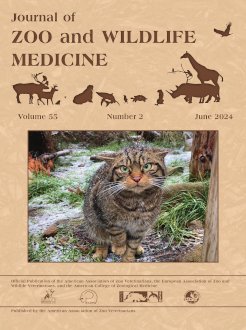Aspergillosis is a major cause of morbidity and mortality in penguins, with triazole antifungal drugs being commonly used for prophylaxis and treatment. This report describes 15 cases of fatal hemolysis associated with liquid itraconazole and voriconazole formulations administered to African penguins (Spheniscus demersus) from four institutions. All penguins underwent stressful events (e.g. relocation, induced molt) and were administered commercial liquid itraconazole formulations or compounded voriconazole liquid suspension. Observed clinical signs in affected penguins prior to death included hyporexia, weight loss, lethargy, dyspnea, red-tinged droppings, and obtunded mentation. Intra- and extravascular hemolysis and hemoglobinuric nephrosis were the primary pathologic manifestations on postmortem examination. The concentration-dependent hemolytic potentials of itraconazole, voriconazole, and commercial and compounded vehicle suspensions were evaluated in vitro by exposing chicken whole blood as a surrogate for penguin blood. Hemoglobin content in blood plasma was then measured by spectrophotometry. Neither itraconazole nor voriconazole alone induced hemolysis in vitro. The vehicle ingredients sorbitol and hydromellose induced hemolysis, but not at predicted plasma levels in chicken erythrocytes, suggesting neither the azole antifungals nor their major vehicles alone were likely to contribute to hemolysis in vivo in these penguins. Potential mechanisms of toxicosis include generation of an unmeasured reactive metabolite causing hemolysis, preexisting erythrocyte fragility, or species-specific differences in hemolytic thresholds that were not assessed in the chicken erythrocyte model. More research is needed on the potential for toxicosis of azole antifungal drugs and carrier molecules in this and other avian species.
How to translate text using browser tools
13 June 2024
FATAL ACUTE HEMOLYSIS FOLLOWING TRIAZOLE THERAPY IN AFRICAN PENGUINS (SPHENISCUS DEMERSUS)
Courtney N. Patson,
Elizabeth J. Elsmo,
Lauren Trepanier,
Michael M. Garner,
Michael J. Murray,
Ellen Bronson,
Lorelei L. Clarke,
Sherry K. Cox,
Robert J. Ossiboff,
Marley E. Iredale,
Bryce M. Miller,
Lindsey Waxman,
Eric Littman,
Mary I. Thurber
ACCESS THE FULL ARTICLE





